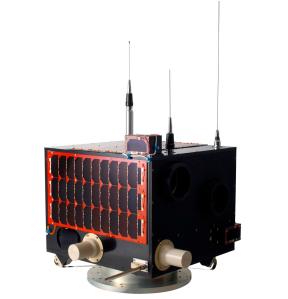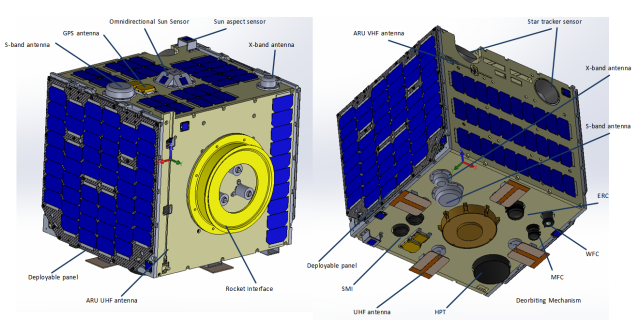On July 21 ten amateur radio CubeSats built by students at the Southwestern State University were deployed from the ISS. QSL cards and a diploma are available for receiving the SSTV, APRS and Voice messages
On his website Dmitry Pashkov R4UAB reports:
Small spacecraft (ICA), created on the YUZGU-55 platform, have been operating in real space flight for more than ten days. The cyclogram of work includes the transmission of voice messages, telemetry, call sign and SSTV images.
In view of the great interest in the space experiment “Radioskaf”, which is aimed at popularizing space research, Southwestern State University will be happy to send a QSL card to all radio amateurs who have successfully conducted a communication session with satellites.
To receive a QSL card, you need to send information: call sign, location, session date and time, carrier frequency, modulation type (APRS, FM-Voice, Robot36) and the result of a successful session (audio sample, telemetry text and image). The data is sent in the form of Applications for QSL. In the return letter you will receive the address where you need to send the card.
To obtain a diploma, you need to take 10 different SSTV images and voice messages, as well as decode 10 APRS telemetry messages (AFSK 1142 baud format) from any of the satellites, and apply for a Diploma
Satellite frequencies:
437.0000 MHz — SWSU-55 #8 — RS6S
437.0125 MHz — KETs#2 — RS12S
437.0250 MHz — KETs#1 — RS9S
437.0500 MHz — SWSU-55 #1 & R-390 #1 — RS10S
437.0750 MHz — SWSU-55 #2 — RS11S
437.0750 MHz — SWSU-55 #3 — RS1S
437.0870 MHz — SWSU-55 #4 — RS2S
437.0870 MHz — SWSU-55 #6 — RS4S
437.1000 MHz — SWSU-55 #5 — RS3S
437.1125 MHz — SWSU-55 #7 & R-390 #2 — RS5S
Source R4UAB
https://r4uab.ru/2022/08/02/diplomnaya-programma-mka-yuzgu-55/
https://twitter.com/R4UAB
Nader Omer ST2NH describes how to receive the satellites at
https://twitter.com/st2nh/status/1554223850329718785
Ten amateur radio CubeSats deployed from ISS
https://amsat-uk.org/2022/07/21/ten-amateur-radio-cubesats-deployed-from-iss/






You must be logged in to post a comment.